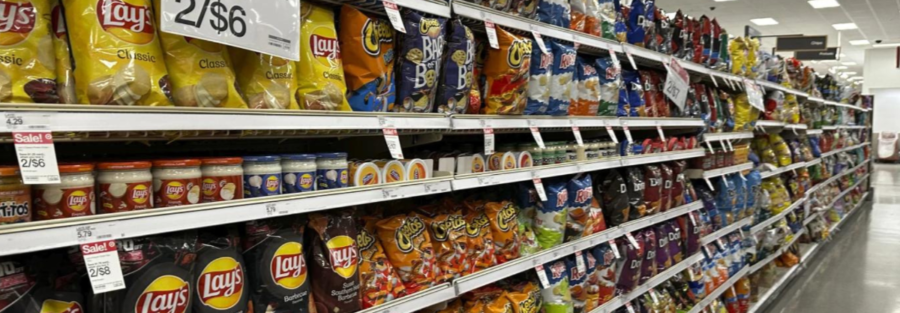Why Lowering Prices Might Not Be the Best Move for Retailers
Major retailers like Target, IKEA, Walmart, and Aldi have begun lowering prices on various products due to consumer selectivity and inflation. Retailers hope that lowering prices will increase volume and force them to find margins elsewhere. Most of these price cuts are for basic goods; at Target, these range from food items to diapers to pet food.
While this strategy may seem consumer-friendly, it carries significant risks that could negatively impact both the retailers and the broader economy. This ostensibly beneficial tactic might not be as advantageous as it appears for several reasons: it erodes brand value, impacts profit margins, initiates a race to the bottom among retailers, affects consumer perception, and provides only a short-term gain.
Erosion of Brand Value
One of the most significant risks of lowering prices is the potential erosion of brand value. Retailers have invested years in building their brands to represent quality and trust. By slashing prices, they risk being perceived as less premium, which can dilute their market position. Consumers often associate higher prices with better quality, and consistently lowering prices can shift this perception, potentially leading to a long-term decline in brand equity.
In the case of Target, the retailer is missing the opportunity to capitalize on its affordable luxury status and failing to distinguish itself from discount retailers. Dropping prices too low can cheapen the brand image, serving as a temporary fix to a long-term problem.
Impact on Profit Margins
Retailers operate on thin profit margins, especially in competitive markets. Lowering prices can further squeeze these margins, making it difficult for companies to cover operational costs and invest in future growth. While the strategy might drive short-term sales, the long-term financial health of the company could be jeopardized. This is particularly critical in sectors where margins are already under pressure from rising supply chain costs and increasing operational expenses.
Some retailers, like IKEA, are choosing to decrease their margins strategically. According to Tolga Öncü, head of retail at Ingka Group, the largest owner of IKEA stores, “This is the moment for companies like IKEA to invest in pricing rather than profitability.” They hope that price cuts will lead to increased sales and attract more customers. However, this approach carries significant risks and might not be sustainable in the long run, as it places added pressure on maintaining operational efficiency and could undermine future profitability.
Race to the Bottom
Price reductions can trigger a “race to the bottom” among competitors. As one retailer lowers its prices, others may feel compelled to follow suit to stay competitive. This can lead to an unsustainable market environment where companies continuously undercut each other, harming the entire industry. Such a scenario benefits no one in the long run, as businesses may struggle to maintain profitability, and consumers might see a reduction in product quality and variety.
In the case of retailers like Aldi, Walmart, and Target, they have effectively lowered prices in competition with one another. Notably, Walmart is attracting a new segment of customers who make over $100,000 per annum. This shift indicates that consumers are prioritizing lower prices over brand loyalty, contributing to the race to the bottom. As a result, retailers and consumers alike are caught in a cycle that undermines long-term stability and product diversity.
Consumer Perception and Behavior
While consumers might initially respond positively to lower prices, this can lead to changing expectations and purchasing behaviors. The way prices are presented and framed significantly influences consumers’ perception of value. Frequent price decreases can diminish this perception of value, making it challenging to restore regular pricing without backlash.
If consumers become accustomed to frequent discounts, they may delay purchases, waiting for the next price drop. This behavior can create unpredictable sales cycles and inventory management challenges for retailers. Moreover, constant price reductions can make it difficult to maintain perceived product value, complicating the return to regular pricing.
Conclusion: Short-Term Gains vs. Long-Term Stability
All these points emphasize that short-term gains from lowering prices can undermine long-term stability, including consumer perception, profit margins, and brand value. While lowering prices can boost short-term sales, it may not contribute to sustainable growth. Retailers need to focus on strategies that enhance customer experience, improve product offerings, and innovate in service delivery. Relying on price cuts as a primary strategy can detract from these critical areas, potentially undermining a retailer’s ability to adapt and thrive in a changing market.
Need Guidance?
At Profit Drivers, we specialize in providing the expertise and strategic vision needed to navigate these challenges and drive sustainable growth. Our team of seasoned pricing practitioners is dedicated to helping you drive revenue and profitability growth while maintaining consumer perception, margin, and brand value.
Contact Profit Drivers today to learn more about how we can help you transform your business. Reach out to us at info@profitdrivers.com or visit our website at profitdrivers.com for more information and to schedule a consultation. Let’s work together to not just keep up with market changes, but to lead the way with superior insight and smarter decisions.



